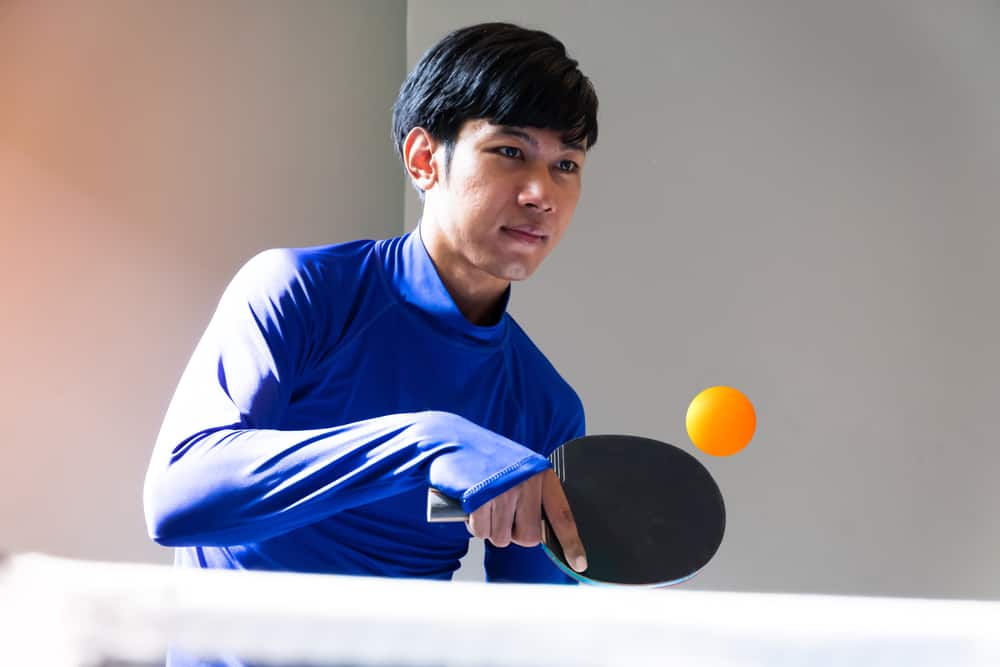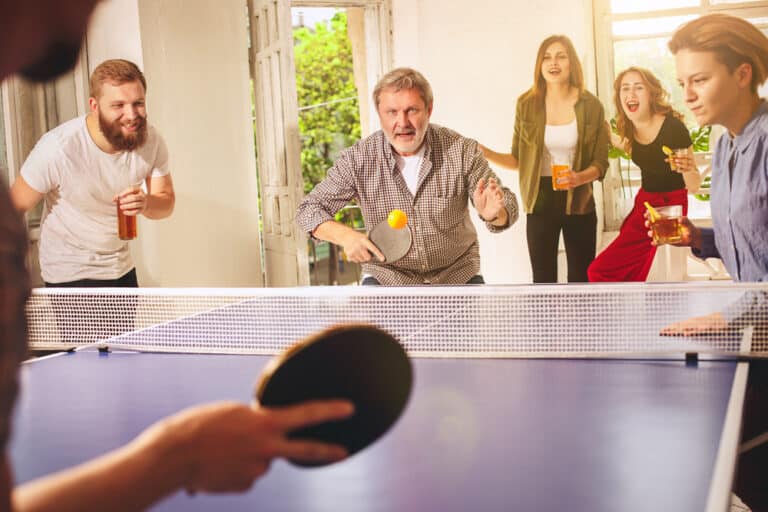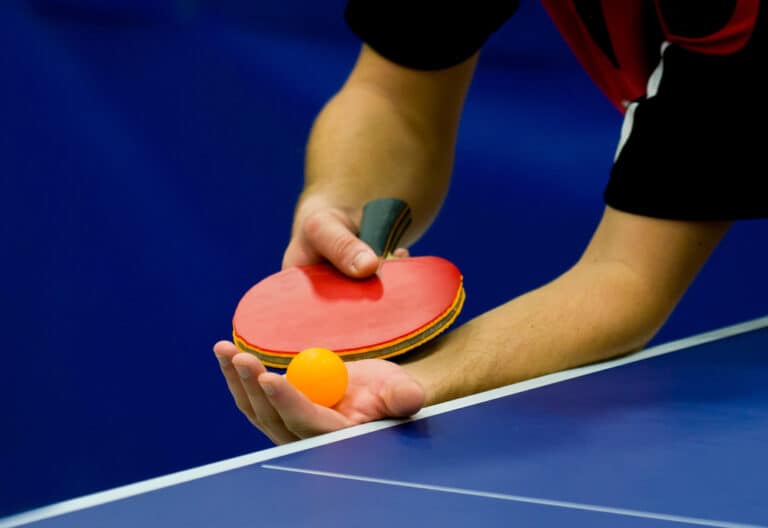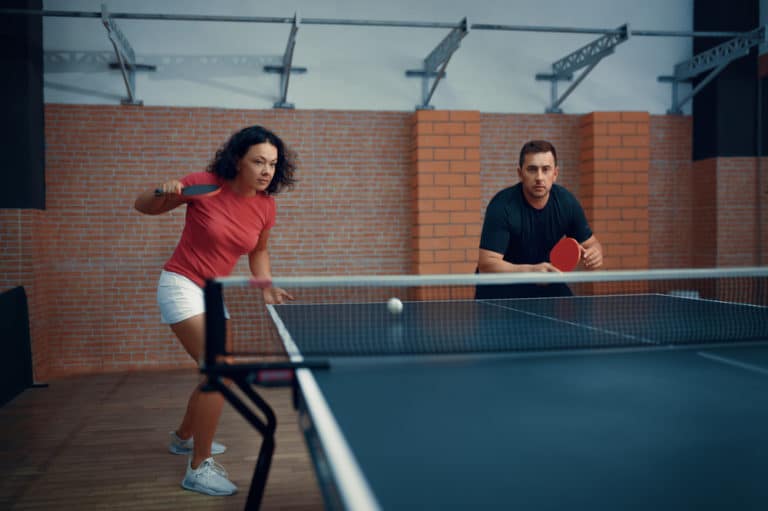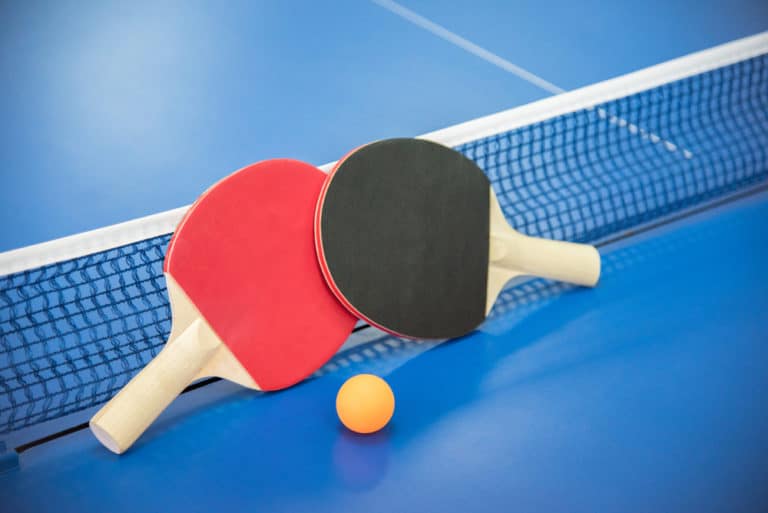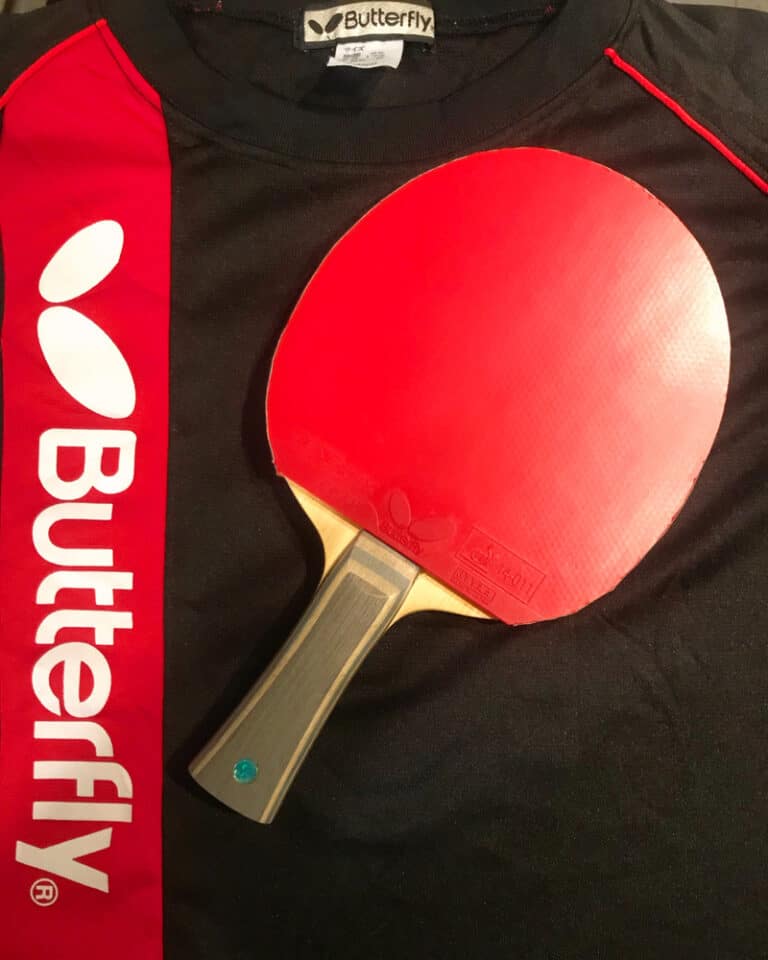Best Table Tennis Blade For Beginners
Even the most skilled table tennis player will find that selecting the appropriate blade is more complex than it first appears. It is because every player has a unique playing style. However, since most may still be developing their playing style, beginners may find the decision more accessible. In light of that, the following examples are some of the best table tennis blades for beginners.
- Butterfly Primorac Blade
- Eastfield Allwood Blade
- Stiga Allround Classic Blade
- Donic Appelgren Allplay Blade
- Butterfly Andrzej Grubba Blade
- Stiga Allround Classic WRB Version
- Eastfield Ashwood Blade
- Yasaka Swden Extra Blade
- XIOM Allround S Blade
An all-wood blade is a must for beginner players since it provides flexibility and a feeling for every shot. Furthermore, going with the fast-paced carbon blade is not recommended for beginners since the blade is stiff and less flexible than a wooden blade; it does not allow beginners to master the basics thoroughly. So, let’s examine what makes these blades the best choice for beginners.
9 Of The Best Table Tennis Blades For Beginners
The “soul” of your table tennis bat is its blade. As the point of contact between your hand and the ball, it is the sole component of your gear that you can actually feel. More advanced players always stress the significance of selecting the right blade.
If your blade is the appropriate one for you and it doesn’t break, you can (and should) use it forever. You’ll discover that you genuinely come to know it over time.
That said, this is a great place to start if you are still a newbie and looking around for the most incredible blades to start with (that may even become your initial blade). So here is the benefit they offer novices, starting with the Butterfly Primorac Blade.
1. Butterfly Primorac Blade
When beginning players are looking to purchase their first blade without rubbers, the Butterfly Primorac table tennis blade is frequently one of the blades that are suggested. It is due to the Primorac blade’s superb feel and control, which prevents it from being too quick for players still honing their technique. Often regarded as a first blade that “can’t go wrong.”
If you seek to control, a Primorac racket is excellent. After persistent bat practice, many beginners discovered that they could position the ball precisely where they wanted in response to their opponents’ hard loops and counters. Additionally, the ball won’t leave the bat very quickly, which is advantageous if you’re a beginner.
One of Butterfly’s top-selling shakehand blades is Primorac. Due to its remarkable adaptability supports all playing styles and may be employed for both offensive and defensive play, depending on the rubbers used.
- Type of blade: Allround Offensive Shakehand
- Blade size: 157×150 mm
- Blade thickness: 5.5 mm
- Blade structure: 5-ply wood
- Weight: 0.22lbs
- Where it is made: Japan
2. Eastfield Allwood Blade
If you’re still learning how to play, hold off on using any offensive or carbon blades until you’ve honed your strokes and control. The temptation is to get a costly and swift blade, but doing so won’t aid your learning.
Look instead at a traditional all-purpose wood blade like the Eastfield Allwood (Available on Amazon below). For decades, players who are progressing have employed these types of blades.
The Eastfield Allwood Table Tennis Blade is a traditional 5-ply all-purpose blade that offers excellent control, medium speed, and fantastic feedback. It’s simple to loop, crush, and attack with this blade. However, it is also ideal if you want to block, control, or even chop the ball.
Finally, The Eastfield Allwood’s lack of speed makes it safe for novice players to pair it with contemporary fast rubbers while maintaining excellent control. Once your skills start to improve, this may also be considered an excellent “next step.”
- Type of blade: Allround Shakehand
- Blade thickness: 5.0 mm
- Blade structure: 5-ply wood
- Weight: 0.18lbs
- Where it is made: London
3. Stiga Allround Classic Blade
The Stiga Allround Classic is another introductory blade that has been regularly suggested for over 50 years. It offers good speed and spins with plenty of vibration to give feedback on how well the ball was struck.
Many top-level players started using this blade when they first started playing table tennis, and many have continued to do so over their careers. As a result, the Stiga Allround Classic is the gold standard for what an excellent all-purpose blade should be. Speed, control, and consistency have all been struck in the right proportion.
- Type of blade: Allround Shakehand
- Blade thickness: 5.1 mm
- Blade structure: 5-ply wood
- Weight: 0.19lbs
- Where it is made: Sweden
4. Donic Appelgren Allpay Blade
The Donic Appelgren Allplay is made in Sweden with a sharp all-purpose blade. It is ideal for all contemporary playing styles where ball control is essential, depending on the rubber used. In addition, this blade is excellent at blocking quick, spiny receiving shots.
Additionally, the blade performs in a neutral range, making it ideal for beginners to master all strokes. It would be advisable to avoid high tension rubber at first since if you put it on this blade, it would act more like an offensive blade. You can increase the strain in your setup once you have mastered returning challenging services.
Finally, several beginners who used the Donic Appelgren said it had a sizable sweet spot and helped them improve their skills quickly.
- Type of blade: Allround Shakehand
- Blade thickness: 5.4 mm
- Blade structure: 5-ply wood
- Weight: 0.17lbs
- Where it is made: Sweden
5. Butterfly Andrzej Grubba Blade
It has long been a cornerstone of recommendations, and no list of beginning blades would be complete without at least one Butterfly Andrzej Grubba blade. And for a good reason; the Grubba blades, renowned for their excellent control and spin creation with superb feel, were always softer and slower, allowing plenty of dwell time.
This blade vibrates a lot, but in an exemplary manner since it helps beginners gauge the force of each shot. Excellent for a controlled attack at around mid-distance from the table. Overall, the Andrzej Grubba blade is another top seller from Butterfly, helping the all-around player in every circumstance with its simple handling and excellent feedback.
- Type of blade: Allround Shakehand
- Blade thickness: 5.3 mm
- Blade structure: 5-ply wood
- Weight: 0.17lbs
- Where it is made: Japan
6. Stiga Allround Classic WRB Version
The WRB version (Available on Amazon below) of the Stiga Allround Classic allows the head of the blade to accelerate more quickly for quicker returns, greater power, and more sensitivity and touch. It is accomplished by reducing the weight of the handle.
This Stiga blade is a genuine contender. Lightweight blade appropriate for both traditional rubbers and tensors. It provides an excellent ball feel as the ball hits. Except for advanced power looping away from the table, it is ideal for all levels when combined with sticky Chinese rubbers to provide good speed and colossal spin.
The WRB variant is an equally well-liked blade overall, although players have strong feelings about it either way. A blade that a novice can purchase and use for the duration of his career.
- Type of blade: Allround Shakehand
- Blade thickness: 5.2 mm
- Blade structure: 5-ply wood
- Weight: 0.18lbs
- Where it is made: Sweden
7. Eastfield Ashwood Blade
Eastfield produces just two table tennis blades. The Eastfield Allwood, as was previously mentioned, is for beginners and improvers, while the Eastfield Ashwood (Available on Amazon below) is for players moving from the beginner level into the more advanced/intermediate path. However, many reviewers stated that this is their ideal beginner blade since it gives much control, even if the Ashwood has a little bit more speed.
A traditional 7-ply offensive blade with terrific speed, outstanding control, and fantastic feel is what the Eastfield Ashwood Table Tennis Blade is all about. Ben Larcombe, an English table tennis coach, has been using it since 2018.
It’s ideal for players who want to maintain control while still generating a respectable level of force in their shots. Additionally, it functions well with various contemporary speed glue effect rubbers.
Many people say it seems like an all-around blade when serving, pushing, and blocking. It makes it simple to maintain short serves and table-top blocks. However, when you make a large loop, it shifts into second gear and propels the ball ahead with the speed you weren’t even aware it had!
The Eastfield Ashwood has a lovely white ash exterior, and the flared handle is comfortable in your hand and allows you to hold the bat lightly.
- Type of blade: Offensive Shakehand
- Blade thickness: 5.4 mm
- Blade structure: 7-ply wood
- Weight: 0.19lbs
- Where it is made: London
8. Yasaka Swden Extra Blade
A very flexible and versatile blade, the Yasaka Sweden Extra may be used with slower or quicker rubbers to suit the player’s playing style.
Like the Sweden Classic, the Yasaka Sweden Additional has the extra kick needed to perform powerful offensive strokes. However, even though it has additional gear for speed, it still has excellent control and a great feel.
It is a great blade for new loopers since it has excellent control, a wonderful feel, a medium-sized sweet spot, and lots of dwell time. This blade, which is somewhat heavier than standard all-purpose blades, gives additional power. Furthermore, the excellent value for the money is a plus, and it is available in both Chinese Penhold and shakehand variants.
- Type of blade: Allround Shakehand
- Blade thickness: 5.8 mm
- Blade structure: 5-ply wood
- Weight: 0.18lbs
- Where it is made: Sweden
9. XIOM Allround S Blade
The Allround S is XIOM’s take on a traditional all-purpose blade with a South Korean foundation in a European manner.
In addition, the slower, more regulated speed allows you to dominate the game against your opponent. Soft or max sponges work nicely with faces that are a little bit thinner and larger. It gives players a firm and distinct feel that ties them to the ball.
The XIOM Allround S is an excellent blade for beginners wishing to mix in loops with a little defensive all-around play and outstanding value for money because it is light and has a large, thin head.
- Type of blade: Allround Shakehand
- Blade thickness: 5.4 mm
- Blade structure: 5-ply wood
- Weight: 0.19lbs
- Where it is made: South Korea
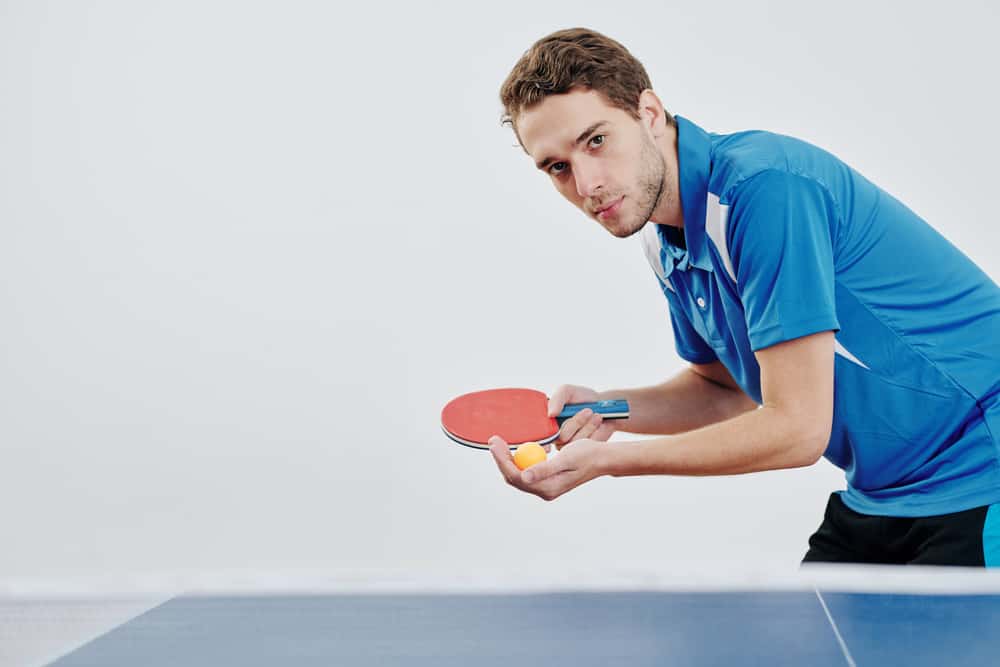
Picking A Blade That Fits Your Skill Level
It might be tempting to get the best blade overall, which is the one that is the fastest, spinniest, and feels the most in control. Advanced blades, however, are challenging to handle and frequently only deliver the best results in the hands of professional users.
In light of this, I have selected the blades that beginners who are still establishing their preferred playing style and those who wish to master the fundamentals would find the best choice.
Purchasing sophisticated gear before you’re ready will hinder your game more than help it. So instead, concentrate on improving your table tennis abilities and pick a paddle that will quicken the process. With that in mind, let’s examine what you need to know in more detail.
Understanding The Different Bat Ratings
We evaluate each rubber and blade based on three key factors – they are a simple approach to determine if a piece of equipment would suit you. However, to know whether a piece of equipment will actually suit your style, you should go a bit farther than these features as you play the game.
- Speed
How quickly you can make the ball move is its speed. Most players want to play quickly and look for equipment to match their playable speed. Speed may be increased by adding more plies to your blade or using rubber with a thicker sponge.
- Control
Control is the capacity to maintain consistency and keep the ball on the table. Since speed and control are closely correlated, slower bats often have better control. The harder it is to handle the bat, the quicker it is.
- Spin
The amount of rotation you can create by brushing the ball is called spin. Strong spin is produced by tacky rubbers, making your opponent’s life difficult. However, it is somewhat of a double-edged sword because spinny rubbers sometimes find it challenging to counter-spin.
Understanding Blades
The wooden portion of the bat, known as the blades, is where you attach your rubbers and grip them while playing. They are constructed from thin, glued-together pieces of wood.
Typically, blades contain five to seven plies, while specific cutting-edge blades occasionally have more layers. Most of the sensation you experience from the ball comes from the blades, which is crucial for adding spin to your strokes.
- All-wood blades: The most prevalent composition is all-wood, which you may find in the beginner to intermediate blades. The blade’s name implies that it is entirely made of wood, with no additional layers like carbon. Blades made entirely of wood often provide the most sensation but are slower.
- Carbon composition: Blades that combine carbon and wood are called carbon composition blades. They frequently cost more money and cater to more advanced players. However, carbon quickens motion and dulls sensation. With that in mind, it is less than ideal for beginning players since it moves too quickly and hinders the improvement of their strokes.
Know The Different Types Of Handles
There are four primary varieties of handles available. Your choice of handle mostly depends on your individual preferences and how you grip your bat.
- Flared: The most typical kind of handle is flared. It is widest at the end and is thinnest in the center. It makes it less likely that your bat will escape your grasp.
- Straight: The handle has the same width all the way around. Straight handles may be square or rounded.
- Anatomic: the handle bulges in the center when you hold it in your palm.
- Penhold: Only penhold grip players may use this. Available in both Chinese and Japanese designs, which affect the length and roundness of the handle.
Conclusion
Jumping straight toward blades aimed at advanced players will not help you learn the basics, develop your skills, and help you improve your game. Instead, this list boasts plenty of Allround blades that would help beginners identify their preferred playing style as they advance through the basics.
Finally, this list compliments beginners by introducing blades best suited for slower gameplay, allowing players to get the feel of the ball and helping them improve by getting a grip on the basics.
References
- https://www.reddit.com/r/tabletennis/comments/tft8us/what_are_your_top_10_rubbers_and_blades_make_it/
- https://www.quora.com/How-can-I-select-a-table-tennis-blade
- https://www.mercurynews.com/2022/04/01/the-6-best-ping-pong-paddles/
- http://www.reddit.com/r/tabletennis/comments/tws3br/our_complete_guide_to_choosing_the_right_blade/
- https://www.amazon.com/Best-Ping-Pong-Bat/s?k=Best+Ping+Pong+Bat

